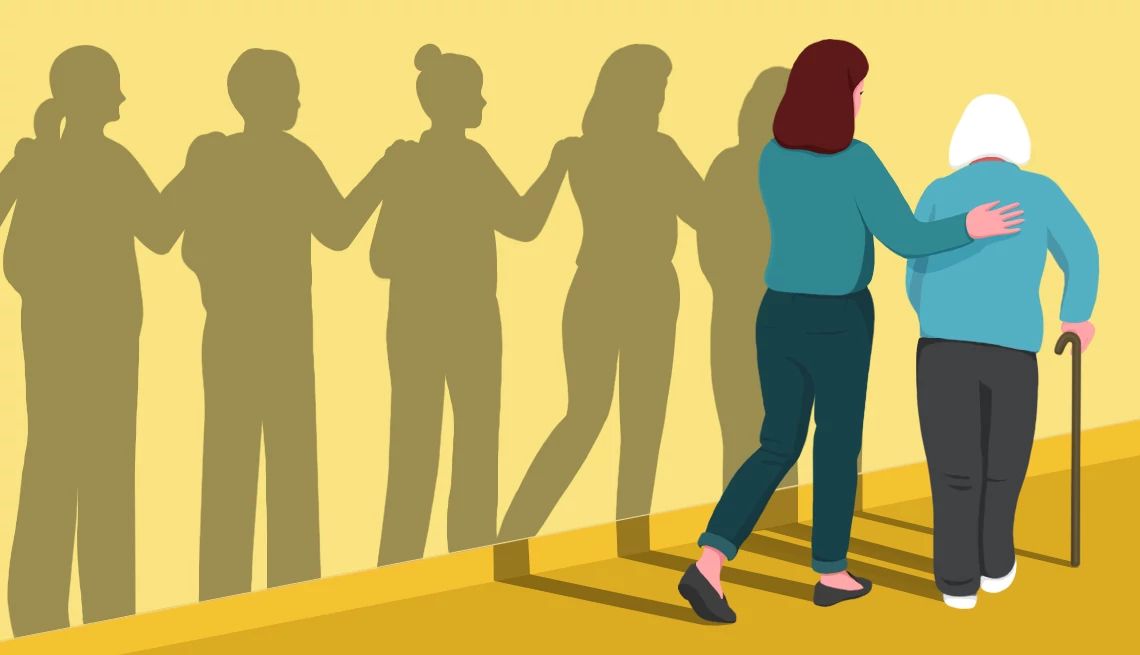AARP Hearing Center


Suppose that you were in the midst of a presentation at your work when you were advised that your elderly mother — whom you had been helping to caretake in your home for years — was extremely ill.
What would you do?
For Gene Lanzoni, head of enterprise content at Guardian, this was a most painful reality in 2013. His decision to finish his presentation before leaving to tend to his ailing mom is what ultimately convinced him that something had to be done to change not only his own perspective but that of the workplace. “I was struggling and I needed to leave, but at the time, I didn’t think it was the best thing career-wise to step out,” he says.
Since then Lanzoni’s employer has helped to create and support Employee Resource Groups (ERGs) — which offer workers resources and services in the workplace and at home so that employees can problem-solve and share life experiences on a host of issues including caretaking for older adults and loved ones. The rise of ERGs in general — a report from McKinsey & Co. and LeanIn.org notes that 35 percent of companies have added or expanded their support for ERGs since the start of 2020 — including ones for caregiving make sense, especially since according to AARP research, 61 percent of family caregivers also hold down a job with the majority (60 percent) working more than 40 hours or more per week.
Guardian now has nine ERGs for everything from workplace diversity to disability issues. And Lanzoni voluntarily stepped up to colead the caregiver ERG, aptly named CARE (Caregivers Advocating for Resources and Empowerment).
The CARE ERG has more than 600 members, many of whom attend monthly informational meetings, share best-practice tips and support one another by normalizing workplace discussions about caretaking for older adults. Lanzoni says his role is to let as many employees as possible know that they have a place to go at work for caregiving help.
ERGs normalize caregiving conversations at work
“Elder care has lagged behind child care in the employee space,” says Tricia Sandiego, director of business integration at AARP Programs. “Sometimes there’s a stigma associated with elderly caregiving such as: Are you distracted and not able to focus on your job?”
Thanks, in part, to these ERGs, that misperception is changing.
ERGs — particularly those focused on helping employees care for aging parents or elderly spouses with special needs as they age — are slowly transforming the dynamics of the American workplace.
“America has six generations of people in the workforce, so we have to acknowledge that elderly care is a reality for many of us,” says Farzana Nayani, consultant and author of The Power of Employee Resource Groups: How People Create Authentic Change.
Guardian has addressed that reality by hosting webinars with speakers, coffee chats, and lunchtime get-togethers replete with advice, tips, and a mutual sharing of caregiving experiences. The company has also partnered with caregiving specialist Bright Horizons to offer employees benefits, such as back-up care.
How do you start a caregiving ERG?
There are several steps employees can take to get a caregiving ERG off the ground at their workplace.
































































More From AARP
11 Natural Foods to Help Boost Your Metabolism
Some foods and spices can even help burn belly fatHow Caregiving Can Alter Dreams and Goals
Post-caregiving life may be different than you imagined — in a good wayFixing America’s Caregiving System
New programs, laws and policies are starting to give caregivers the support they needCaregiving While Working
What to know about employee benefits and the law